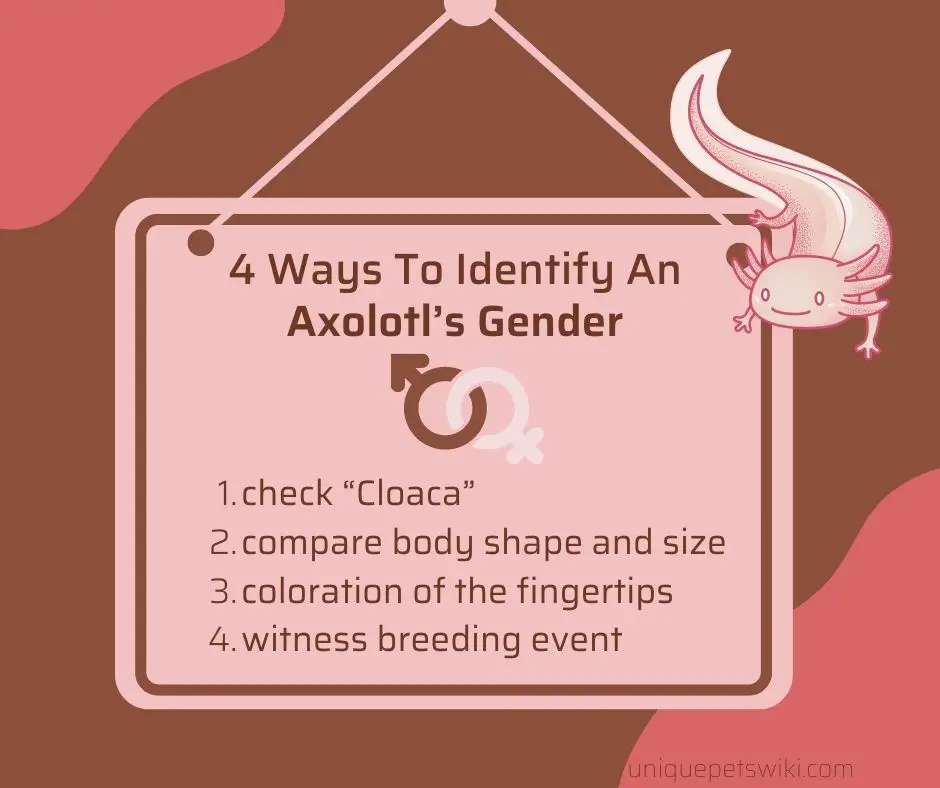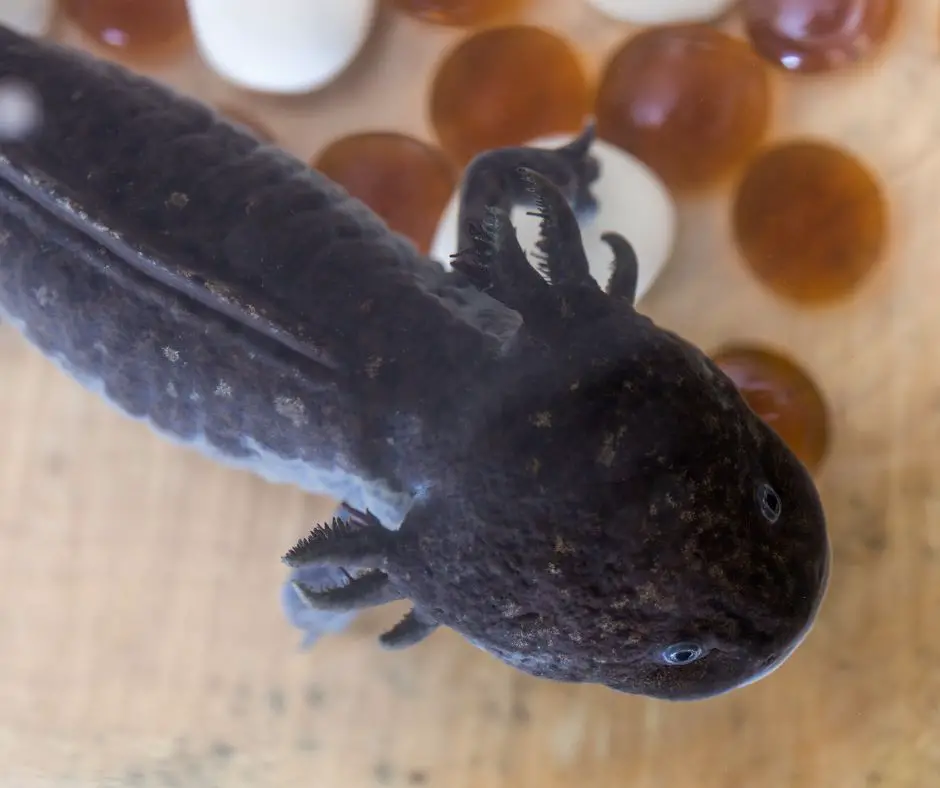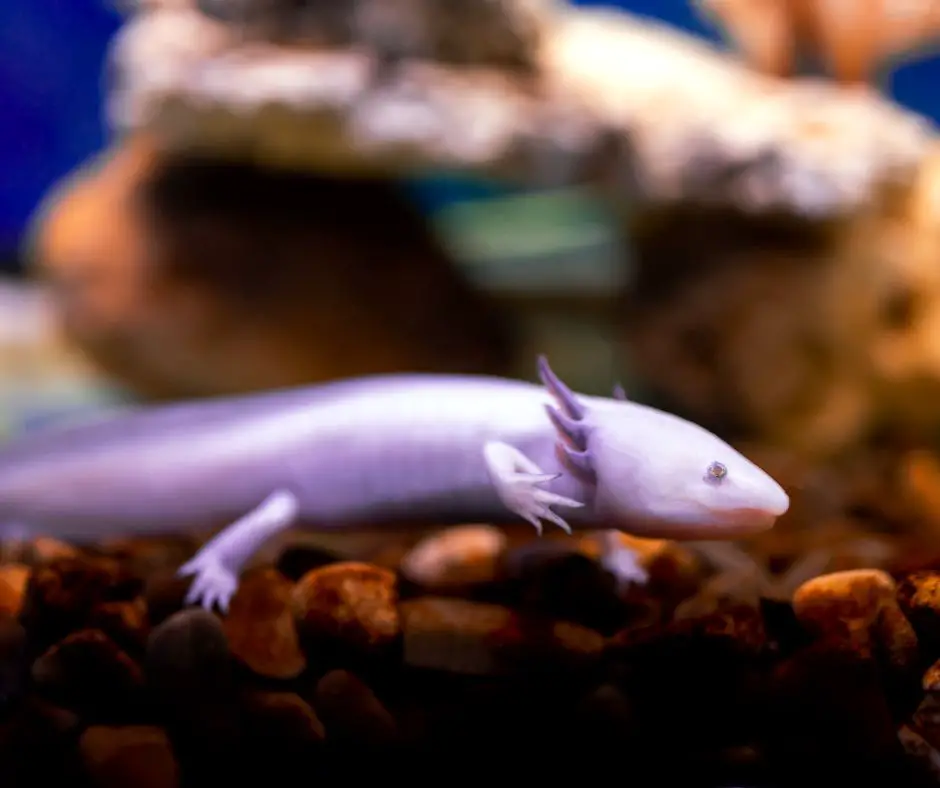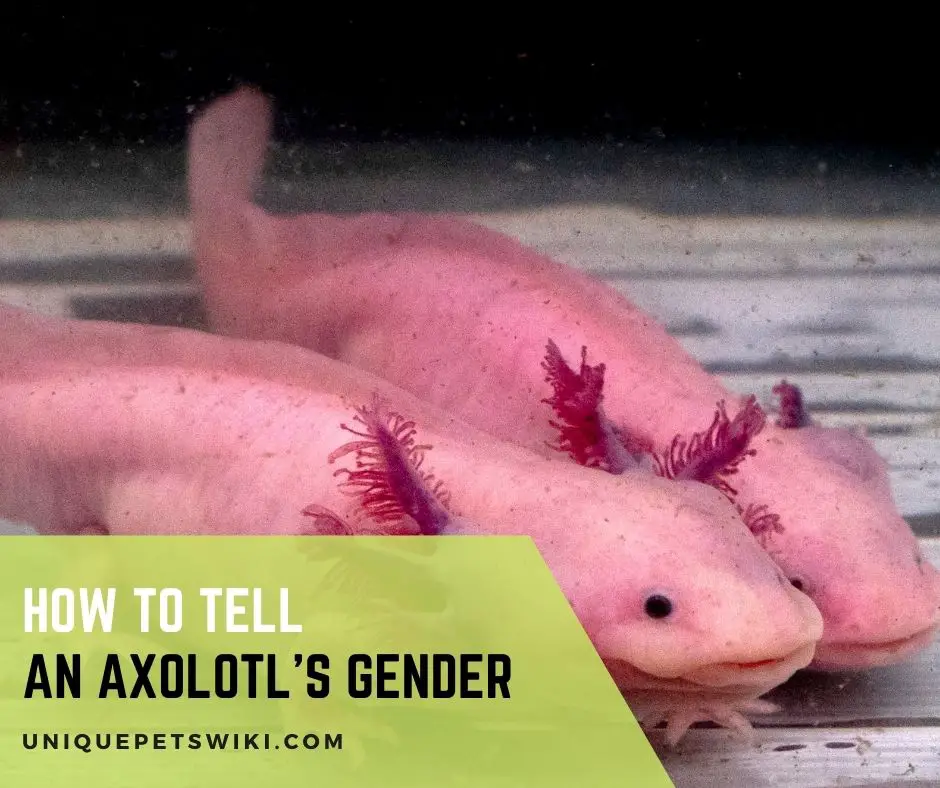It is difficult to predict an Axolotl’s gender until it is fully grown because while they’re juveniles, there are very few physical differences between males and females.
Axies only reach maturity once they are about 18 months of age. So till that happens, it can be tricky saying whether your Axie is a male or a female.
If you want to name your Axie, but are unsure of its gender, it may be best to wait until your pet reaches adulthood. Go in for gender-neutral names till then!
At maturity, there will be several physical differences that can help you tell exactly whether your Axolotl is a boy or girl.
In this guide, we will tell you how to determine your Axolotl’s gender.
Contents
4 Ways To Identify An Axolotl’s Gender
There are a couple of rules to follow before you identify sex an axolotl.
Firstly, you must wait until your pet attains maturity because, until then, their bodies are not fully developed. So a 50/50 guess is all you can make until that point.
Male axolotls mature earlier than females and in any case, it is better to wait until at least 18 months to determine an Axie’s gender.
Once your pet is a fully-grown adult, you can use the following methods to identify your Axie’s gender:
- check “Cloaca”
- compare body shape and size
- coloration of the fingertips
- witness breeding event

- Check Behind its Back Legs – The Cloaca
The back of the legs in axolotls consists of a tiny bumpy area known as the ‘cloaca’. In females, the cloaca bump is smaller than that in males.
In males, the cloaca ‘bump’ is more pronounced and while it may vary in size from one Axie to another, you can see it quite distinctly.
If your axolotl has a flat, small, short, and nearly unnoticeable cloaca, then it is likely to be female. On the other hand, if it has a significant and distinct cloaca at the back of its legs that is even visible from above, your pet is likely to be male.
Do note that this is not a definite or 100% foolproof way of telling an axolotl’s gender. To complicate matters, female Axies tend to develop a ‘poop bump’ after eating.
This is a U or V-shaped swelling just behind their legs that distends towards the abdomen. Worry not – this is completely normal and it disappears once your pet has a bowel movement.
But it is important not to confuse the cloaca with a female poop bump.
- Compare Body Shape and Size
Another way to tell if your axolotl is male or female is to check their body shape and size.
Mature Axolotls reach a size between 9 and 18 inches (with the average size being 12 inches).
Female Axies are generally fatter, larger, and wider. They are also significantly ‘rounder’ because they carry eggs.
The presence of egg sacs makes female Axies acquire a ‘pear shape’. Males, on the other hand, are elongated and slender.
- Check Their Fingertips
While this is not a method of sexing an Axie, it can tell you your Axolot’s approximate age.
Axolotls have 4 fingers in the front and 5 on the back. At sexual maturity, their toe tips acquire a dark color.
According to experts, the bottom of their feet also appears ‘dirty’ once they reach sexual maturity. This is a good indication to breed your Axies and also the right time to determine their genders.
As mentioned before, male Axies mature before females and for most, this occurs between 18 to 27 months.
- Witness Breeding Event
If you want to mate your Axies you can introduce a (likely) male and female in the same tank. The male will nudge the female Axie’s hindquarters with its snout.
He will also deposit its sperm packets on the bottom of the tank and guide the female over it. This will enable the female to collect the sperm into her cloaca.
Also read: Can Axolotls Live Together?
Can Axolotls Change Gender?

Many amphibians are capable of changing their gender.
This phenomenon is known as sexual plasticity and creatures like clownfish, reed frogs, bearded dragons, and green sea turtles are known to display it.
It occurs based on factors like ambient temperature, age of the creature, post reproduction, etc.
The Axolotl is not one of the species that display sexual plasticity. Axies have two genders assigned at birth, male and female.
As seen above, the differences between the two are subtle at least until they attain sexual maturity.
The bottom line is that Axies cannot change their gender. Also, unlike in humans, male axolotls have two of the same sex chromosomes whereas females have two different sex chromosomes.
If you’re planning to breed your axolotls, then the best time to do so is when your Axolotls have reached sexual maturity – usually between 18 and 27 months.
Are Male or Female Axolotls Better?

Today, there is a growing demand for axolotls as pets. These exotic amphibians are cute, hardy, and do not need too much maintenance.
As long as you take care of water changes and their dietary needs, your Axie should thrive. They spend most of their time swimming and do not crawl on land, unlike other amphibians.
Healthy, well-cared-for Axolotls could live up to 10 years and some are even known to survive for 15-20 years.
So, it really does not matter if you have male or female Axolotl. You can also house a male and female axolotl together – just keep an eye on them to ensure they get along.
You can also keep two adult male or two female axolotls together in one tank. However, you must ensure that they are roughly the same size otherwise, a larger Axie might end up eating the smaller one.
Sometimes, axolotls end up fighting and one might lose its limb. However, they quickly grow the missing limb back.
Juvenile Axolotls under 6 inches in length are known for displaying cannibalism – they attack and eat each other. So, until this point, it is best to keep your young Axies in separate tanks.
Also read: Axolotls Eating Each Other: Causes and Solutions
Conclusion – How To Tell An Axolotl’s Gender?
It can be tricky telling a male and female axolotl apart. When they are juveniles, they virtually have no differences at all.
Once they reach maturity, which is between 18-27 months, female Axolotls get wider, rounder, and fatter while males remain smaller and slender.
Males also have a pronounced cloaca, – a bump located behind their hind legs, compared to the female’s cloaca.
We hope this guide helps you tell your Axolotl’s gender with ease.
